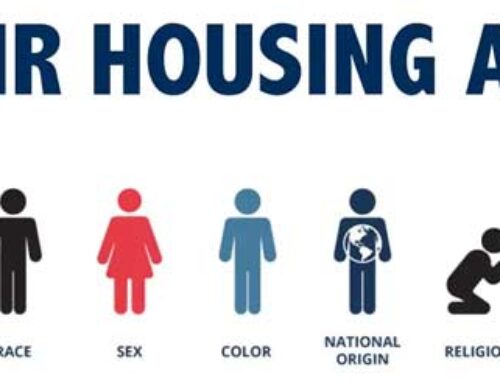
Sellers have benefited immensely from the rebound in home buying that has occurred in the wake of the pandemic. Across the United States, dozens upon dozens of major housing markets have tipped heavily in favor of sellers, with inventories of available homes for sale declining all over. As a result, sales prices have begun to surge above list prices in nearly every major city. Using data from Redfin, including sales-to-list price ratios from May 2020 and May 2021, as well as the percentage of homes that went off the market within two weeks, we’ve determined which cities have become the ultimate seller’s markets in 2021. Read on to find out the 10 cities where sellers are most reaping the rewards of pent-up demand for houses.
1. Oakland, California
Oakland is no stranger to big demand for housing, but six months into 2021, this city has now reached a new level of frenzy. Last May, the sales-to-list price in the Oakland metro area was 101.2%, and thus, buyers were already paying more for homes than they were listed for. However, by the end of May 2021, Oakland’s sales-to-list price reached a new, record level of 110.8%, meaning the average sale price in the area is nearly 11% over the average list price. Additionally, homes are flying off the market quickly, with 80.2% of houses going off the market within two weeks in May 2021. Compare that to only 49.7% of homes in May last year.
2. Rochester, New York
Upstate New York housing markets have gotten particularly hot since last year. Rochester had a sales-to-list price ratio of 100.2% in May 2020. A year later, that ratio soared to 109.7% in May 2021, an increase of nearly 10% in only one year. In line with this trend, the percentage of homes for sale that went off the market within two weeks has also grown dramatically. Last May, just under 63% of for-sale homes were gone from the market within two weeks. By the end of May 2021, however, more than 88% of homes for sale in the Rochester area went off the market in two weeks.
3. Austin, Texas
The capital of Texas has experienced massive growth over the last 10 years, with the city’s population now exceeding 1 million, according to World Population Review. As such, Austin’s housing market has become a hotbed for activity. Last May, Austin’s sales-to-list price ratio was 98.9%, which meant buyers were getting a slight discount on the homes they purchased. Fast forward to May 2021 and the picture is quite different. Now, the sales-to-list price in the Austin metro area is 108.9%, an increase of 10% from May 2020 to May 2021. In fact, going all the way back to 2012, when Redfin began tracking data, Austin’s sales-to-list price ratio never reached 100%, let alone surpassing it by almost 9%.
4. San Jose, California
San Jose was already a hot housing market, but the rebound from the pandemic has only heated it up more. From a sales-to-list price ratio of 100.3% in May 2020, homes in the San Jose area now sell for almost 8% over the average list price, with a sales-to-list price of 107.8% in May 2021. What’s more, the share of homes for sale that went off the market within two weeks has grown markedly: From only 40.9% in May 2020, to more than two-thirds going off the market in May 2021 within just two weeks.
5. San Francisco, California
The Bay Area housing market is always expensive, but this year has brought about a surge in sale prices. In May 2020, the sales-to-list price ratio in the San Francisco area was 101.4%. A year later, that ratio now stands at 108.4%, which is an increase of 7% over the course of 12 months. Increased demand has led to a significant drop in the months supply of available inventory. As of May 2021, the San Francisco area has only 1.2 months supply of homes for sale, down by more than half from May 2020, when there was 3.7 months supply of homes.
6. Seattle, Washington
The Seattle housing market has been giving the Bay Area a run for its money in terms of rising prices and demand. In May 2020, the sales-to-list price ratio in the Seattle metro area was 100.4%, so sales prices were not much off from list prices. However, by the end of May 2021, Seattle’s sales-to-list price ratio reached 107.7%, significantly favoring sellers. At the same time, homes for sale have vanished from the market very quickly. In May 2020, the percentage of homes that went off the market within two weeks was just shy of 63%. A year later, that percentage has grown to nearly 86%.
7. Buffalo, New York
Like Rochester, Buffalo’s housing market has been given a jolt this year. Last May, the average sales-to-list price ratio was 99.9%. Over the course of one year, that ratio has surged to 106.7% by May 2021. With prices and demand on the rise, homes for sale in Buffalo are not staying on the market long. In May 2020, less than two-thirds of houses for sale went off the market within two weeks. But by May 2021, the percentage of homes gone from the market in just two weeks had risen to 80%.
8. Grand Rapids, Michigan
Grand Rapids is the fastest growing city in Michigan and one of the fastest growing in the Midwest. Though quickly growing, Grand Rapids managed to keep housing prices relatively stable for years. In May 2020, the sales-to-list price ratio was 99.2% in the Grand Rapids metro area. Now, a year later, the sales-to-list price ratio exceeds 105%. Equally significant is the huge increase in the share of homes going off the market in two weeks’ time. Last May, the share was 65.4% of homes, but by the end of May 2021, 81.5% of homes that went on the market were off it within two weeks.
9. Eugene, Oregon
Oregon housing markets have been on a hot streak for a few years now, but Eugene is particularly incendiary. The percentage of homes for sale that went off the market within two weeks grew from only 57.5% in May 2020, to a staggering 82.6% of homes in May 2021. At the same time, Eugene’s sales-to-list price ratio has shot up from 99.8% last May, to 105.4% as of May 2021. Available inventory stands at a mere 290 homes, which is down more than half from May 2020, when inventory stood at 642 homes.
10. Denver, Colorado
The Denver housing market has witnessed substantial activity over the last 12 months. The Denver metro area has seen a dramatic decline in available inventory. As of May 2021, for-sale inventory is down to 2,241 homes, a stark contrast to the nearly 7,300 homes for sale available in May 2020. Homes are going very fast in the Denver metro area, with more than 86% of houses going off the market within just two weeks in May 2021, compared to less than 61% in May 2020. Simultaneously, Denver’s sales-to-list price ratio grew from an affordable 99.3% last year, to more than 105% in May 2021.
Source- https://www.forbes.com/sites/andrewdepietro/2021/06/30/these-10-cities-are-the-ultimate-sellers-markets-of-2021/?sh=77870269728d






